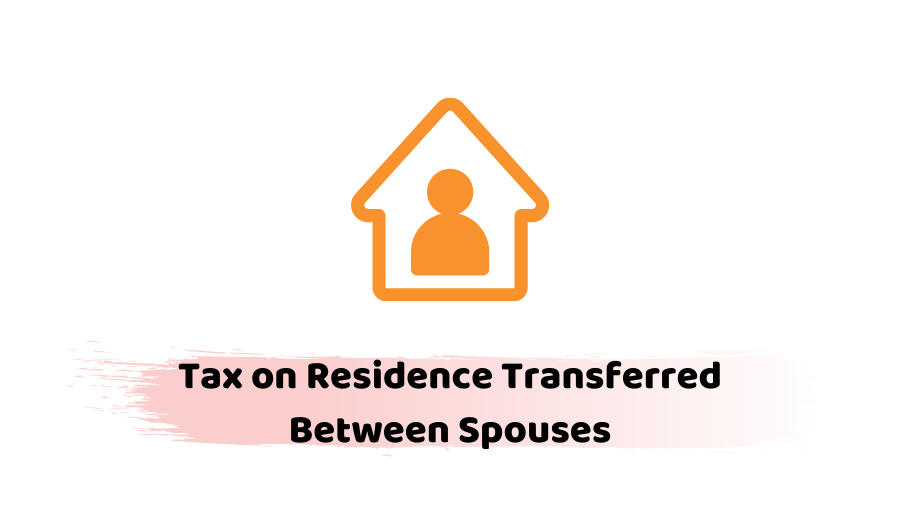Residence transfer between spouses
If a residence is transferred between spouses or between civil partners, the period of ownership of the transferee begins at the start of the period of ownership of the transferor.
When a residence is transferred between spouses or civil partners, living together, whether by sale or by gift. The period of ownership of the transferee TCGA 1992 S222(7)takes care of it:
(a) At the beginning of the period of ownership of the transferor. This also applies where the residence is transferred from one to the other on death.
This provision only applies for the purpose of computing private residence relief. It has no effect on the computation of the gain which arises on any disposal by the transferee spouse or by the transferee civil partner.
Compulsory Conditions to Transfer Residence Between Spouses or Civil Partners:
- Spouse or civil partners living together. So the residence must be their only or main residence for transfer.
- When residence passes from one to the other, on the death of either of them they must live together. The residence must only be or the remain residence before the death of the transferring spouse or civil partner.
- The extended period of ownership is subject to the limit of TCGA 1992 s223(7). This is solely for the purpose of computing the relief due to any subsequent disposal.
In some situations, the extended ownership period will not be to the advantage of the transferee.
Example 1
Ann and Andrew were a married couple. They lived together in a house which Ann purchased in March 1990. For the first five years of her ownership, the house was rented to tenants. When Ann died the house passed to Andrew. He continued to occupy it as his only residence until it was sold.
When Andrew accounted for the period he owned the house, the private residence relief would be available for the whole period. He needs to consider the ‘extended ownership period’ from March 1990 to the date he sold the house.
During this extended ownership period, the house was rented to tenants which means that the private residence relief is restricted.
Example 2
On 1 March 1995, Bob and Brenda married into a new house. After marriage, they nominated Brenda’s house to be their main residence as from 1 March 1995. Brenda originally purchased the house on 1 September 1990.
Brenda died on 1 February 2015. Her house was transferred to Bob at a probate value of £400,000. Bob moved out of the house on 1 February 2015 and moved into his other house which he owned. The other house became his main residence. The former main residence remained empty until it was sold on 1 January 2019 for £380,000.
Bob’s loss on the sale of the house is as follows:
Sale proceeds £380,000
Less cost (probate value) £400,000
Loss £20,000
As private residence relief is available on the property only part of the loss is an allowable loss. Bob takes over his wife’s period of ownership of the property.
Period of ownership 01.09.90 to 01.01.19 = 339 months.
Period of only or main residence 01.03.95 to 01.12.15 = 238 months
The final period allowed = 18 months
The loss is restricted by £20,000 x (238 + 18)/321 = £15,103
The allowable loss is reduced to £4,897.
The above is explains HMRC capital gains:
The legislation which deals with ‘private residence relief; is often referred to as ‘principal private residence’ relief (or PPR relief) is Taxation of Chargeable Gains Act 1992 sections 222 to 226.
Section 222(7) states the following in relation to the period of ownership when there is a transfer between spouses:
From section 222-226, ‘the period of ownership’ has different interests at different times. This is taken to begin from the first acquisition taken into account.
Arriving at the expenditure which under Chapter III of Part II is allowable as a deduction in the computation of the gain. To which this section applies. This is the case of an individual living with his spouse or civil partner:
(a) If the one disposes of, the dwelling-house or part of a dwelling-house which is their only or main residence to the other, and in particular if it passes on death to the other as legatee, the other’s period of ownership shall begin with the beginning of the period of ownership of the one making the disposal.
(b) If paragraph (a) above applies, but the dwelling-house or part of a dwelling-house was not the only or main residence of both throughout the period of ownership of the one making the disposal. The account is any part of that period where it was his only or main residence as if it was also that of the other.
Courtesy: ACCA





















































